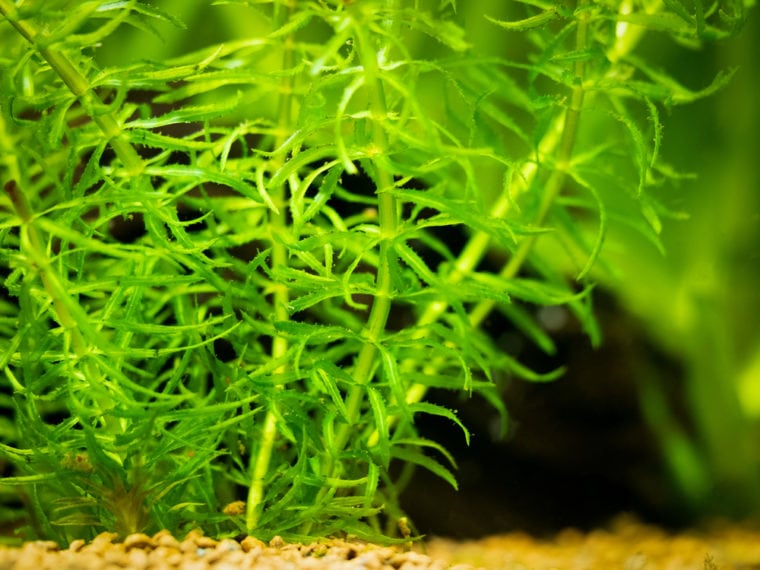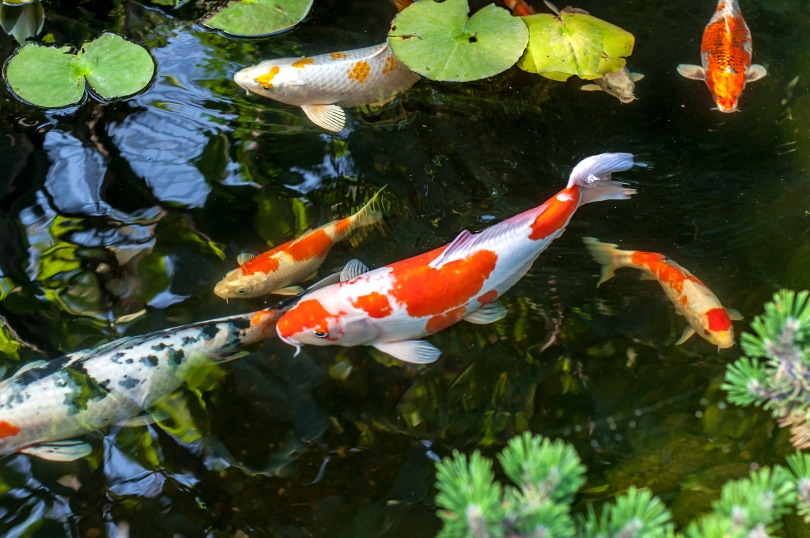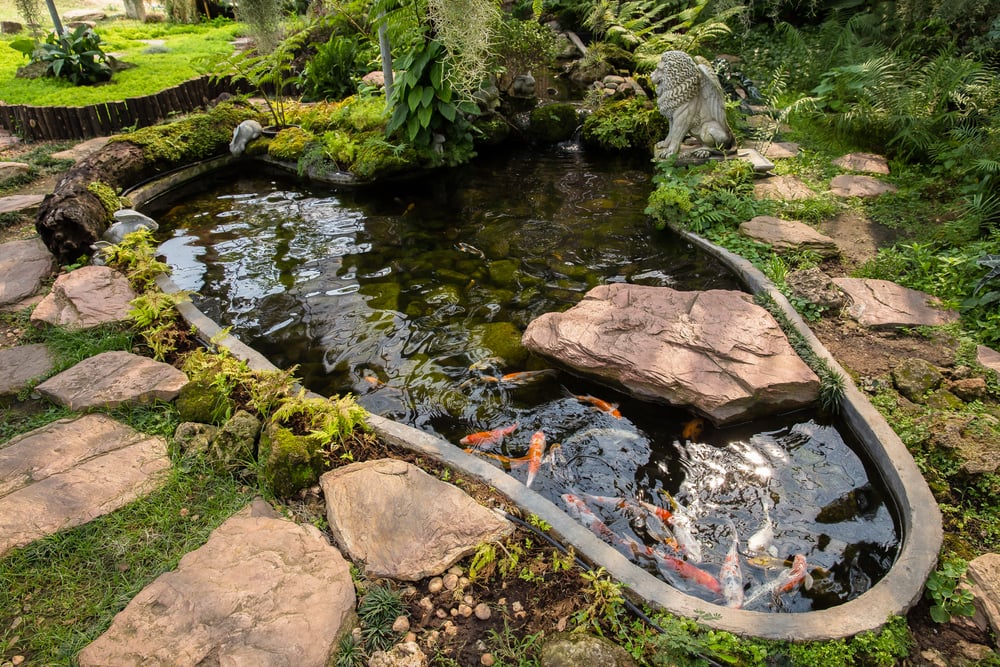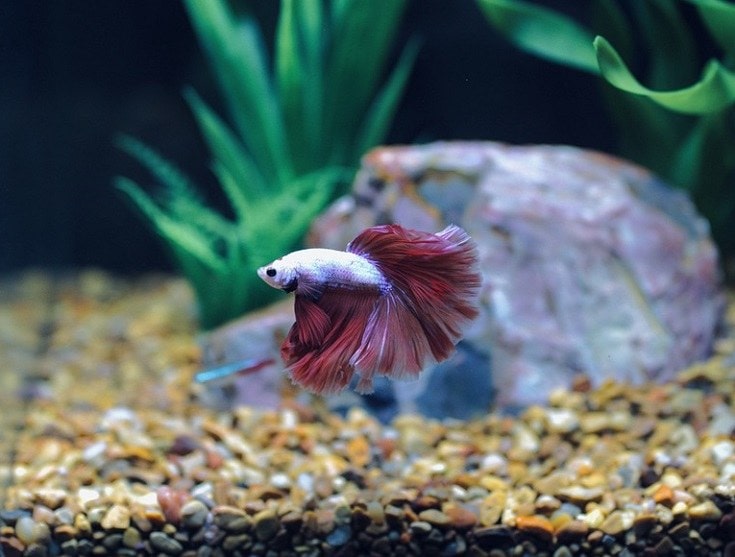
Anacharis is a readily available stem plant, popular in a variety of setups for both experienced and novice growers. Many appreciate the ease of care of this plant, which has proven to be simple to maintain and aesthetically lush.
If you’re considering adding live plants or want to add additional plants to an existing aquatic scene—find out if Anacharis matches your comfort level and tank needs.
Useful Information About Anacharis
| Family Name: | Elodea |
| Common Name: | Water Weeds |
| Origin: | South America |
| Color: | Green |
| Size: | 3+ feet |
| Growth Rate: | Fast |
| Care Level: | Easy |
| Lighting: | Moderate |
| Water Conditions: | Hard water, 6.5-7.5 pH |
| Minimum Tank Size: | 10 gallons |
| Supplements: | Not necessary |
| Placement: | Background |
| Propagation: | Stem |
| Compatibility: | Freshwater, tropical, finicky fish |
Anacharis Appearance
Anacharis has a crisp, green appearance that adds a natural aesthetic to any tank. These plants grow with minimal effort in a variety of water conditions, and you can control growth wire light exposure to get the vibe you want.
Healthy Anacharis ranges from a beautiful array of green shades—from bright green to a deep, rich green. Anacharis grows to suit its environment. Wild Anacharis can reach impressive heights, up to 3 feet or more.
However, in tanks, it will grow as much as it can, which is why it requires regular maintenance, to prevent overgrowth.
Floating Anacharis
Dare we say that floating Anacharis is even easier to care for than the regular? It’s essentially the same thing, only it survives at the surface without anchoring to the substrate.
All Anacharis can be floating if uprooted or cut.
Where to Find It?
Anacharis is readily available at many pet shops and online stores. Since so many aquarists find it appealing, you shouldn’t have any trouble locating it on sites like Amazon.
Ordering plants online can sometimes be a challenge since there’s no way to ensure that the plant will arrive in mint condition, with no breakages, browning, or other damage.
However, many shops online do divvy out guarantees for live plant arrival. We recommend ensuring the company you choose offers this service to relieve yourself of any risk associated with purchases.
General Care
Anacharis goes by many names, including Elodea or water weeds. It has a different appearance depending on the light source used. For example, in lower light, the plants are tall with sparse leaves.
Whereas, if there is an abundance of lighting, Anacharis will grow dense and bushy, making it an extremely excellent hiding spot for fry and crustaceans.
Here’s how to make it a success.
Habitat, Tank Conditions & Setup
Anacharis is a very versatile plant, meaning with just about any setup regardless of size or complexity. It’s also cold-water compatible so it is an excellent choice for temperature tolerant plants.
Tank/Aquarium Size
Despite the fact that Anacharis can grow quite tall, it only requires a minimum of 10 gallons to grow comfortably. You can easily let Anacharis take off on its own. It floats and anchors. You can trim as needed—and trust us, you’ll need it.
Of course, if you want Anacharis in a large setup, it can work splendidly for that as well, spreading rapidly and beautifully in the backdrop.
Water Temperature & pH
The Anacharis plant tends to thrive in most moderate water environments. It is a very cold hardy plant, growing well in crisp waters without the help of fertilizer or CO2.
However, in tropical tanks, they might require a little help because of the difference in conditions.
These plants grow best when pH levels remain between 6.5 and 7.5.
Substrate
Anacharis is truly very simple to plant. It thrives in both aquarium gravel and nutrient-rich substrate. You can generally allow the anchors to attach themselves so you don’t smother the roots.
Pruning
You might wonder if you need to perform any upkeep on this plant and we’d be lying if we said no. To avoid overgrowth, regularly prime the plant and keep it at the desired level.
Anacharis likes moderate lighting. But be careful they are getting enough, as low light can be detrimental to the health and livelihood of your plant life.
You should make sure that Anacharis has access to natural or artificial lighting during daylight hours.
Propagation
Propagating Anacharis is exceptionally simple. These plants thrive from cuts of stems. You can anchor them yourself lightly in substrate or let the free float until they root.
Be careful not to bury the stems, as those parts can rot. These plants are pros at doing this part themselves. But if you try, bury just a tiny portion of the stem, no more than a few millimeters.
Lighting
Anacharis loves the light, but remember that you’re in control over the way it grows. This plant reaches toward the light. So, if you want long thin growth, use mid-level to lower light. If you want full, crisp, bushy growth, expose the plant to lots of light.
Be careful of lack of light—this is one thing that can easily kill Anacharis.
Planting Tips
Let Anacharis Anchor Itself
Since Anacharis is so easy to grow, you can let it do most of the hard work for you. Simply place the cut stems into your aquarium and let them do their thing.
If you’re experienced at this, you can probably place the Anacharis without smothering the plant. If so, more power to you!
Don’t Let It Overgrow
Anacharis can grow like crazy. You have to keep total control of growth to maintain a charming aesthetic. You can simply snip off fresh stems of the plant to keep it trim or for starters to replant elsewhere.
Plant in Mid and Foreground
Because Anacharis can grow quite a bit pretty quickly, it’s best to keep it in the middle to back range to prevent visual obstructions.
The 5 Benefits of Having Anacharis in Your Aquarium
1. Provides Oxygen
If you have aquatic life in your tank, plants benefit all therein by providing an extra boost of oxygen.
2. Naturally Cleans
Having plants in your tank helps naturally clean the tank to keep things balanced and fresh.
3. Aesthetically Pleasing
Let’s face it, plants are simply lovely in an aquatic setting. It creates a natural, charming appearance that looks amazing. Anacharis is a beautiful addition to any tank.
4. Fish-Safe Plants
Certain fish, like the goldfish, love to uproot plants in the aquarium. Since Anacharis can float and thrive, your rooting fish can do their worst.
5. Offers Shelter
If you have shy fish or smaller tank mates that prefer refuge, Anacharis can help them hide. It serves as a terrific shelter.
Concerns About Anacharis
Of course, no matter how easy an aquatic plant is to grow, it will have its difficulties. If you wonder what some downfalls are when owning Anacharis, here’s some stuff to think about.
Extra Tank Maintenance
When you have live plants, it requires more tank maintenance. Even though it can clean the tank, it can also pose its own share of debris, which can cloud the waters.
Keeping Up with Plant Health
if you plant this aquatic foliage incorrectly, it is susceptible to root rot. Also, if it has any kind of health problem, it could really take up your time to keep it healthy.
Conclusion
There’s really no reason to avoid Anacharis for your setup. It’s easy to grow, propagate, and manage in the tank. Plus, it serves as a suitable cover for fry and smaller fish to keep them safe and tucked out of sight.
This adaptable plant is a top choice among aquarists for all of the reasons we’ve discussed. If Anacharis sounds like a plant you would love, buy from reputable companies to ensure plant health.
See Also:
- 9 Best Flowering Plants for Aquariums: Reviews & Top Picks
- Parrot Feather: Complete Care Guide for Planting & Growing
Featured Image Credit: Joan Carles Juarez, Shutterstock











